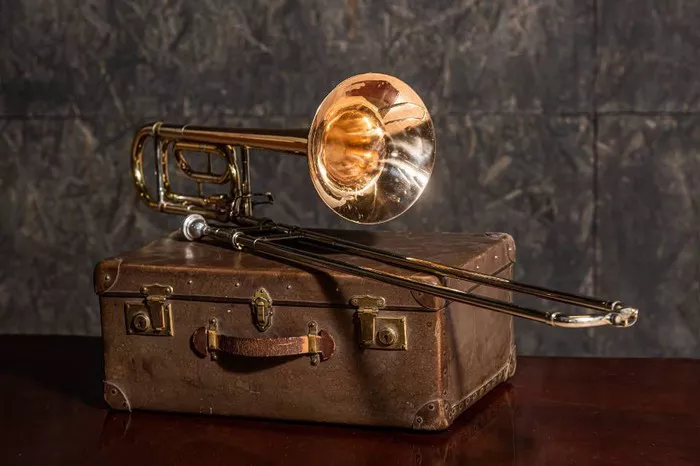The trombone, with its unique slide mechanism, offers a distinctive approach to producing musical notes. Unlike most brass instruments that rely on valves, the trombone uses a telescoping slide to change the pitch. The position of the slide determines the note played, making the relationship between slide positions and pitch fundamental to understanding trombone music. The slide has seven main positions, each corresponding to different notes. By extending or shortening the slide, trombonists can create a wide range of pitches, offering a rich and versatile sound.
Reading Trombone Sheet Music
Reading sheet music for the trombone involves understanding both standard musical notation and specific markings for slide positions and techniques. Here’s a guide to help you navigate trombone sheet music:
Clef: Trombone music is typically written in bass clef, though advanced players might also encounter tenor and treble clef.
Notes and Rests: Familiarize yourself with the basic notes (A, B, C, D, E, F, G) and their corresponding positions on the staff. Also, learn the various rests and their durations.
Slide Position Notations: Trombone sheet music often includes slide position numbers above the notes. For example, a “1” indicates first position, “2” indicates second position, and so on.
Articulations and Dynamics: Pay attention to articulations such as slurs, staccatos, and accents, as well as dynamic markings (pp, p, mp, mf, f, ff) to convey the music’s expression accurately.
Key Signatures and Accidentals: Understand the key signature at the beginning of the staff, which indicates the scale and key of the piece. Accidentals (sharps, flats, naturals) modify the pitch of notes and must be considered while positioning the slide.
Slide Position Chart
Understanding slide positions is crucial for playing the correct notes on the trombone. Here is a visual chart to help you memorize the positions for all the notes:
| Note | Position |
| B♭ | 1st |
| A | 2nd |
| A♭/G♯ | 3rd |
| G | 4th |
| F♯/G♭ | 5th |
| F | 6th |
| E | 7th |
| E♭ | 3rd |
| D | 4th |
| C♯/D♭ | 5th |
| C | 6th |
| B | 7th |
Note: Positions can vary slightly based on the player’s ear and the instrument’s tuning. Fine adjustments might be necessary.
Playing Techniques
To produce clear and accurate notes on the trombone, mastering playing techniques is essential. Here are some tips:
Embouchure: Form a tight, consistent embouchure by placing your lips together and buzzing them into the mouthpiece. The embouchure should be firm but not tense, allowing for flexibility and control.
Breath Control: Use diaphragmatic breathing to support your sound. Inhale deeply, filling your lungs from the bottom up, and exhale steadily, using your diaphragm to control the airflow.
Slide Movement: Practice smooth and precise slide movements. Avoid jerky motions, as they can disrupt the sound. Develop muscle memory for each slide position to ensure quick and accurate changes.
Tonguing: Use your tongue to articulate notes cleanly. The tip of your tongue should touch the back of your upper teeth to start and stop the airflow, producing distinct notes.
Lip Flexibility: Practice lip slurs to develop flexibility. Lip slurs involve changing notes without moving the slide, relying solely on embouchure adjustments and airflow changes.
SEE ALSO: All About 3 Sizes of Trombone You Need to Know
Practice Exercises
Consistent practice is key to mastering trombone notes. Here are some exercises to help you improve:
Long Tones: Play long tones on each note to build a strong, consistent sound. Focus on maintaining a steady pitch and volume.
Scale Practice: Practice major and minor scales in various keys. Start slowly, ensuring correct slide positions and gradually increase speed.
Lip Slurs: Perform lip slurs between different notes in the same position. This exercise enhances embouchure control and flexibility.
Arpeggios: Practice arpeggios to improve your ability to navigate between notes quickly. Focus on smooth transitions and accurate slide positions.
Etudes: Work on trombone etudes that challenge your technical skills and musicality. Etudes provide structured practice and help you apply techniques in a musical context.
Trombone Care
Maintaining your trombone is essential for producing the best sound quality and ensuring the longevity of the instrument. Here are some care tips:
Cleaning the Slide: Regularly clean the slide to remove dirt and debris. Use a slide cleaning rod with a soft cloth or a flexible cleaning brush. Apply slide lubricant to keep the slide smooth and responsive.
Mouthpiece Cleaning: Clean the mouthpiece frequently with warm water and a mouthpiece brush. This prevents buildup and ensures a clear, resonant sound.
Body Cleaning: Wipe down the trombone body with a soft, dry cloth after each use to remove fingerprints and moisture. This prevents corrosion and maintains the instrument’s finish.
Storage: Store your trombone in a case when not in use. Ensure the case is padded and provides proper support to prevent damage. Avoid extreme temperatures and humidity, which can affect the instrument’s condition.
Regular Maintenance: Schedule regular maintenance with a professional technician. They can check for any issues, perform deep cleaning, and make necessary adjustments.
Conclusion
Mastering trombone notes involves understanding the relationship between slide positions and pitch, reading sheet music accurately, and developing proper playing techniques. By following the slide position chart, practicing consistently, and maintaining your instrument, you can achieve clear and precise notes on the trombone. Whether you are a beginner or an experienced player, dedicating time to practice and care will enhance your trombone playing skills and musical expression.


